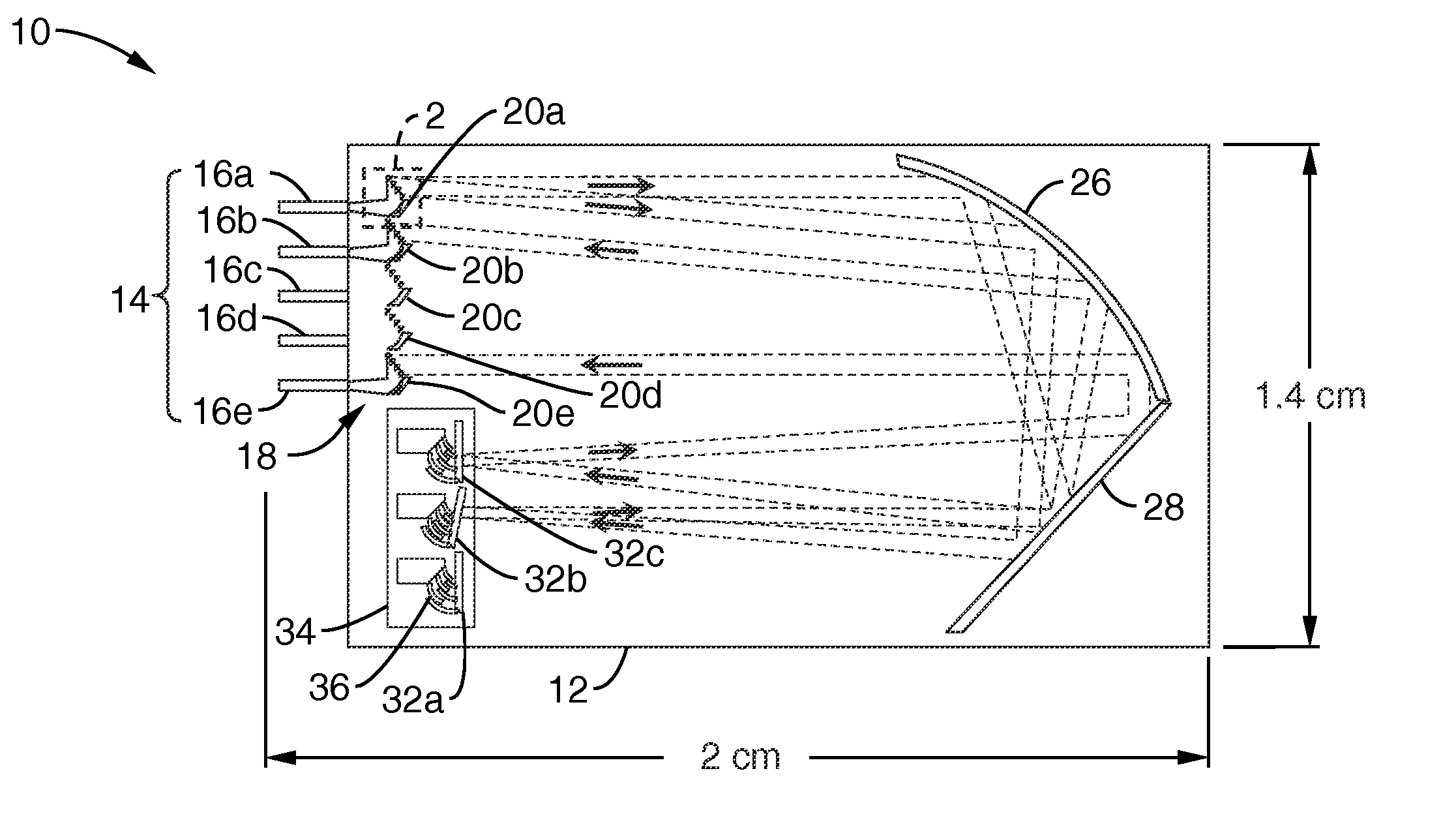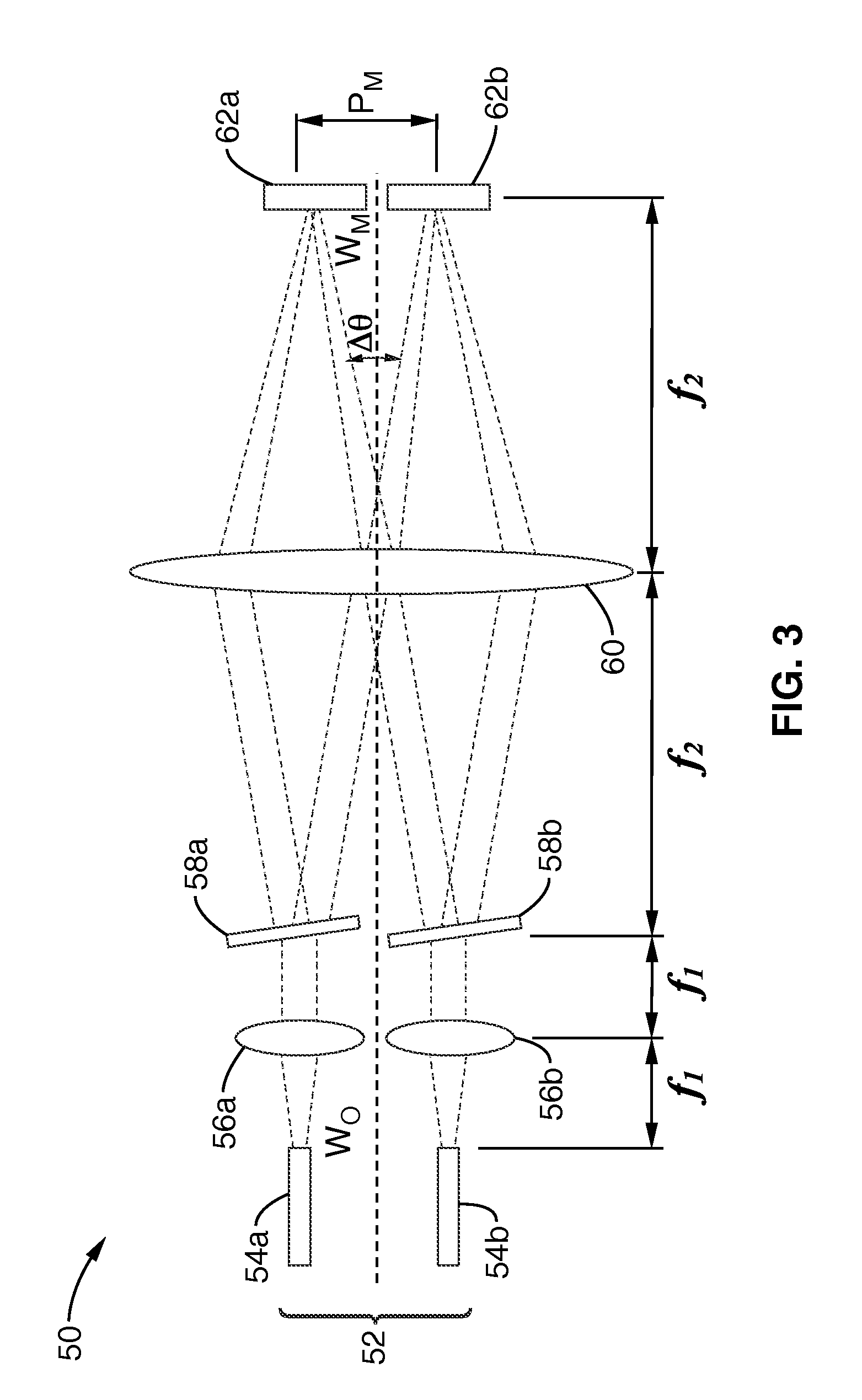Monolithic mems-based wavelength-selective switches and cross connects
a technology of wavelength-selective switches and monolithic mems, applied in the field of optical switches, can solve the problems of large footprint, high cost of implementation, and high cost of precise alignment, and achieve the effect of reducing insertion loss and crosstalk
- Summary
- Abstract
- Description
- Claims
- Application Information
AI Technical Summary
Benefits of technology
Problems solved by technology
Method used
Image
Examples
embodiment 200
[0292]FIG. 65-66 illustrate embodiments of rotary comb-drives having uni-directional and bi-directional deflection. An embodiment 200 of unidirectional deflection mirror is shown in FIG. 65 and provides angular mirror deflection by utilizing a rotary comb-drive actuator. The comb fingers are arranged in concentric arcs to ensure a constant finger gap for the curved contour of rotation. The uni-directional mirror 200 is configured with a base 202 and anchor 204 from which extends a moving element 206 having a mirror surface 208 and comb fingers 210, which being attached to moving element 206 are often referred to as moving comb fingers. Moving element 206 is shown attached to anchor 204 through a compliant spring element 212. Stationary comb fingers 214 extend from base 202 toward interposition between moving comb fingers 210. Displacement of the mirror from initial position 216 is in response to the application of an actuating voltage between the anchor and base, and thus between th...
embodiment 230
[0294]FIG. 66 illustrates an embodiment 230 of a bi-directional micromirror. The movable structure is supported by a flexure spring at the center with symmetric rotary comb-drives on both sides. A first base 232 and second base 234 are shown between which is an anchor 236. A moving element 238 with mirror surface 240 extends from anchor 236, attached through spring 242. First and second sets of movable comb fingers 244, 246 extend from the moving element 238 and interpose, respectively, between fixed comb fingers 248, 250 of first and second bases 232, 234. In this case three electrodes (first base 232, second base 234, and anchor 236) are provided by which displacement can be driven in a pull, push, or more preferably push-pull manner between the two sets of stationary combs.
[0295] This arrangement can achieve approximately twice the mechanical scanning angle of the unidirectional micromirror of FIG. 65. However, the larger lateral offset limits the fill factor of the micromirror a...
embodiment 294
[0306]FIG. 73 illustrates an embodiment 294 of a serpentine spring having a plurality of bends 296a, 296b, 296c . . . 296n. The use of the serpentine spring aids in overcoming stability and stiction issues. The spring is shown with an element thickness of 2 μm. Springs with large ky / kx are desired for lateral stability as well as low operating voltage. The spring constant kx in the bending direction can be reduced by increasing the number of meandering (i.e., smaller Gm), or increasing meandering width Wm. However, the spring constant ky along the spring length is also reduced, lowering the threshold for lateral instability.
[0307]FIG. 74-75 illustrate theoretical spring constant kx and the spring constant ratio ky / kx, respectively, for the serpentine configuration shown in FIG. 73. For these figures, the spring was simulated using finite element method (FEM), specifically using FEMLAB (v. 3.1, COMSOL). The structural mechanics module is used with a Young's modulus of 160 GPa, a Pois...
PUM
 Login to View More
Login to View More Abstract
Description
Claims
Application Information
 Login to View More
Login to View More - R&D
- Intellectual Property
- Life Sciences
- Materials
- Tech Scout
- Unparalleled Data Quality
- Higher Quality Content
- 60% Fewer Hallucinations
Browse by: Latest US Patents, China's latest patents, Technical Efficacy Thesaurus, Application Domain, Technology Topic, Popular Technical Reports.
© 2025 PatSnap. All rights reserved.Legal|Privacy policy|Modern Slavery Act Transparency Statement|Sitemap|About US| Contact US: help@patsnap.com



